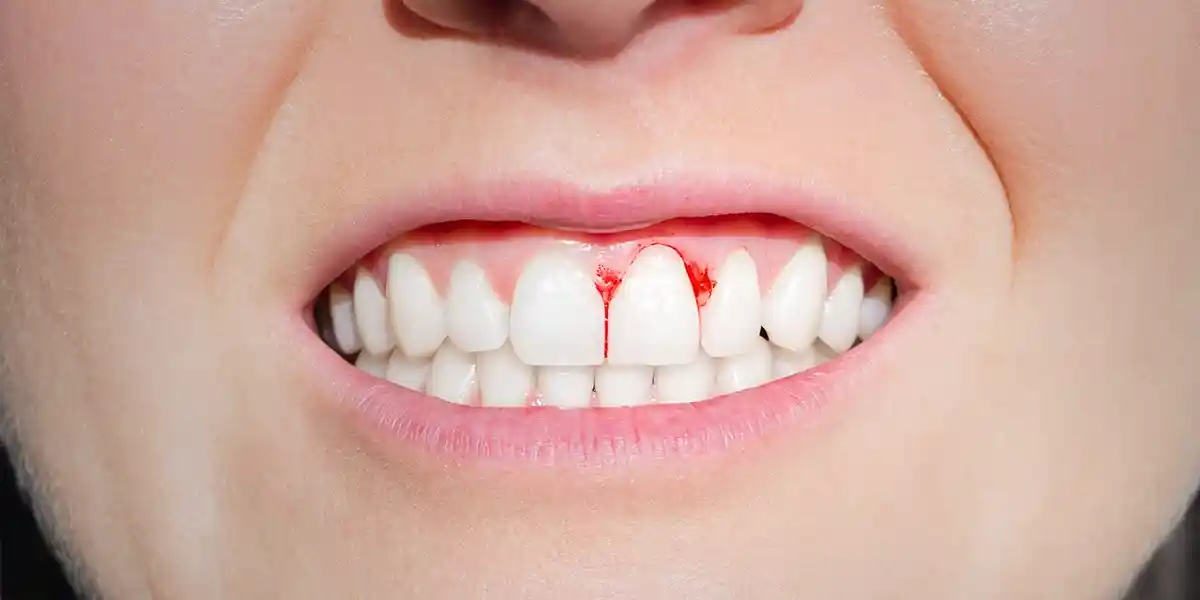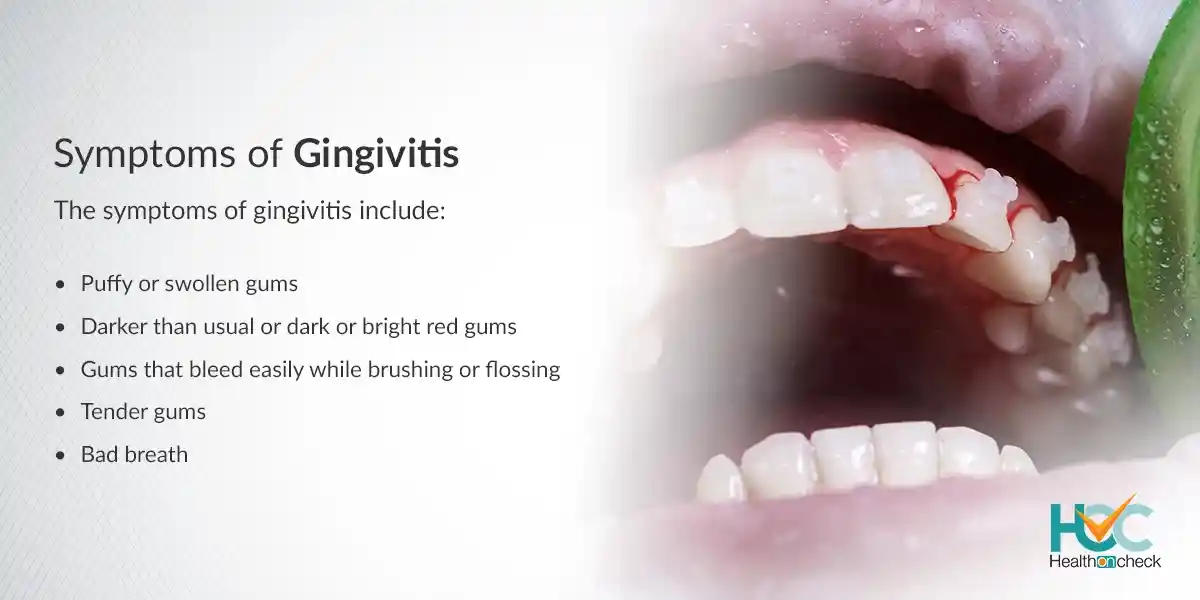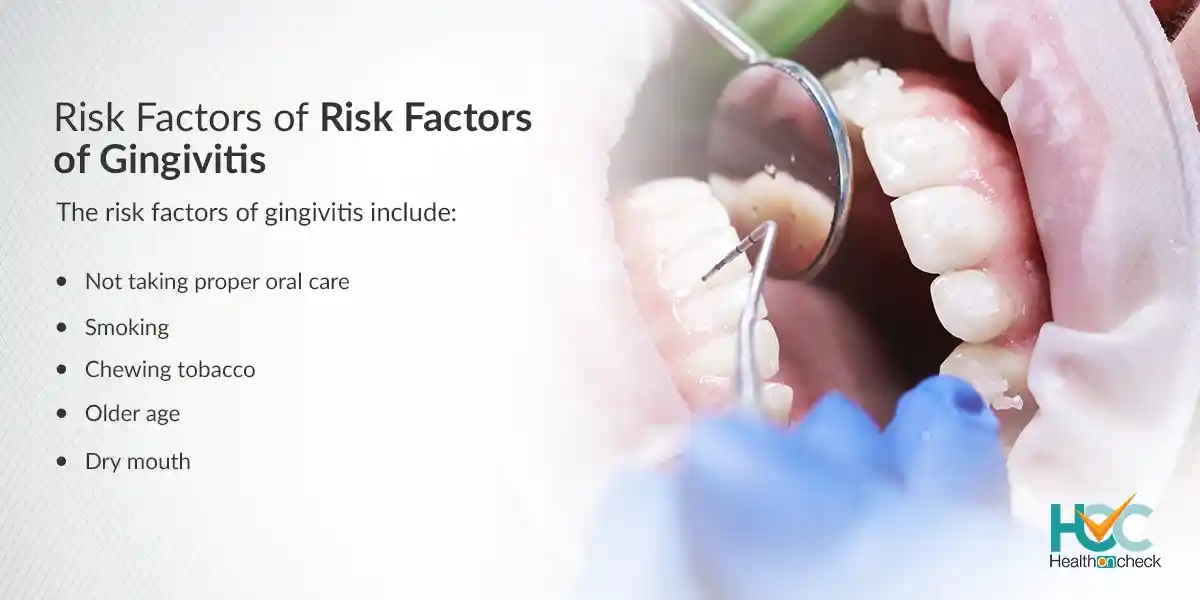All about Gingivitis

What is Gingivitis?
Gingivitis also called periodontal disease, is a mild and common type of gum disease that causes swelling, irritation, redness, bleeding, and sometimes pain in your gingiva, a part of your gum surrounding the base of your teeth. If you develop gingivitis, then you must take it seriously and treat it as soon as possible. Gingivitis does not lead to bone loss but if not treated it can cause a much more severe gum disease, known as periodontitis, along with tooth loss. Not keeping your teeth and gums healthy and clean is the most common cause of gingivitis. Good oral health habits, like brushing at least two times a day, regularly flossing, and going for regular dental checkups, help prevent and reverse gingivitis.
What are the Types of Gingivitis?
There are two main types of gingivitis including:
Dental plaque-induced gingivitis: This type of gingivitis occurs when plaque accumulation irritates a person’s gums, leading to pain, inflammation, and discoloration.
Non Plaque-induced Gingivitis: Non Plaque-induced gingivitis might occur due to a bacterial, viral, or fungal infection. Allergic reactions, illnesses, and reactions to foreign elements including dental prophylaxis paste particles, can also result in this form of gingivitis.
What are the Symptoms of Gingivitis?

The symptoms of gingivitis include:
- Puffy or swollen gums.
- Darker than usual or dark or bright red gums.
- Gums that bleed easily while brushing or flossing.
- Tender gums.
- Bad breath.
What are the Causes of Gingivitis?
Not taking proper care of teeth and gums, which lets plaque develop on teeth, is the most common cause of gingivitis. It leads to the swelling of the adjacent gum tissues.
Factors how plaque can cause gingivitis include:
Formation of plaque on your teeth: Plaque is a sticky film with no colour that is primarily made up of bacteria that manifests on your teeth after consuming sugars and starches in food. It’s important to remove plaque every day because it forms rapidly.
Plaque turns into tartar: Plaque that remains on your teeth may become hard beneath your gum line and tartar, which then collects bacteria. The plaque in the tarter becomes difficult to remove, makes a protective shield for bacteria, and starts irritating the gum line. Professional dental cleaning is needed to eliminate tartar.
Gingiva becomes irritated and swells: The gingiva is the portion of your gum near the base of your teeth. The longer the period of plaque and tartar remaining on your teeth, the more they irritate the gingiva. Gradually, your gums become swollen which can also bleed easily. This is known as gingivitis. If left untreated, gingivitis can cause tooth decay, tooth loss, and periodontitis.
What are the Risk Factors of Gingivitis?

The risk factors of gingivitis include:
- Not taking proper oral care.
- Smoking
- Chewing tobacco.
- Older age.
- Dry mouth.
- Poor nutrition, which includes not getting enough vitamin C.
- Teeth repairing that is not properly fit or are in poor condition, like bridges, fillings, dental implants, or veneers.
- Crooked teeth that are difficult to clean.
- Disorders that lower immunity, like leukaemia, HIV/AIDS, or cancer treatment.
- Certain medicines, including phenytoin for epileptic seizures and some calcium channel blockers used for treating angina, high blood pressure, and other disorders.
- Hormonal changes, including those related to pregnancy, the menstrual cycle, or using birth control pills.
- Specific genes.
- Medical conditions, including some viral and fungal infections.
What are the Complications of Gingivitis?
If not treated then gingivitis can cause gum disease that spreads to underlying tissue and bone, known as periodontitis. This is a much more severe issue that may cause tooth loss.
Ongoing gum disease might be linked to a few diseases that impact the entire body, like diabetes, respiratory disease, coronary artery disease, rheumatoid arthritis, and stroke. According to some studies, periodontitis-causing bacteria may enter your bloodstream via gum tissue and can affect your heart, lungs, and other parts of your body.
Trench mouth, also called necrotizing ulcerative gingivitis or NUG, is a serious type of gingivitis that leads to infection, painful, bleeding gums, and ulcers.
How Gingivitis is Diagnosed?
Dentists generally diagnose gingivitis depending on:
- Examining your dental and medical history and complications that might be the contributing factors to your symptoms.
- Checking your teeth, mouth, gums, and tongue to detect signs of plaque, swelling, or irritation.
- Determine the pocket depth of the groove between your gums and teeth. During this process, your dentist will insert a dental probe in your tooth underneath your gumline, generally at various parts of your mouth. The pocket depth is between 1 and 3 millimetres (mm) in a healthy mouth while pockets deeper than 4 mm might indicate a gum disease.
- Dental X-rays to detect bone loss in parts where your dentist notices deeper pockets.
- Other tests if required.
- If the causes of your gingivitis are not clear, your dentist might prescribe you to go for a medical evaluation to check for other health complications.
What are the Treatment Options Available for Gingivitis?
The aim of gingivitis treatment is to control the infection while restoring healthy teeth and gums. Your dentist will first thoroughly clean your teeth to get rid of harmful bacteria, plaque, and tartar. Additional gingivitis treatments include:
Scaling and root planing: It is the same as routine dental cleaning, but it reaches deeper underneath your gums. Scaling eliminates tartar and bacteria while root planing smooths the surfaces of your teeth roots and stops bacteria from getting stuck.
Good oral hygiene: Gingivitis is cleared by a good dental cleaning but you need to continue the cleanliness after you return home.
Antimicrobial mouthwash: Your doctor may prescribe an antimicrobial mouthwash to rinse your mouth with which can help remove disease-causing bacteria.
Dental work repair: Your dentist might fix or remove crowns, fillings, or bridges sticking out or don’t fit right. It’s easy to keep the smoother surfaces clean.
Living with Gingivitis
There are bacteria in everyone’s mouth and with good oral hygiene you can prevent bacteria from causing gingivitis, the first stage of gum disease. If you diagnose and treat gingivitis early, permanent damage to your teeth and gums can be avoided. Visit a dentist on a regular basis for cleanings and checkups, not only when you have a toothache or other dental problem. Early treatment can reverse gingivitis but if not treated then gingivitis can turn into advanced gum disease. Detecting and treating the problem early may save you a lot of time and money in the future.
Whom to Consult?
If you notice any symptoms of gingivitis, you should meet your dentist promptly. The earlier you seek care, the better the chances of reversing damage from gingivitis and preventing periodontitis. Your dentist might refer you to a periodontist if your symptoms aren’t improving. A periodontist is a dentist with advanced training who specialises in treating gum diseases.




